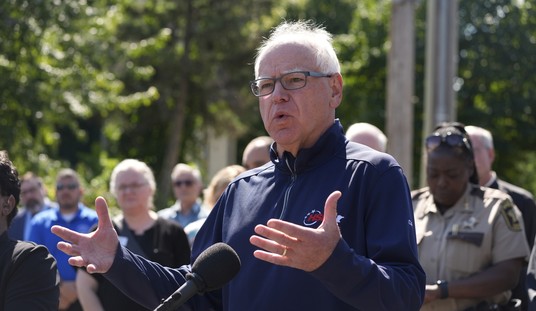Covering a protest is newsworthy, but the Washington Post was found to be working in conjunction with climate activists.
The blurred lines between journalists and protests have been an ongoing concern. During the BLM riots of 2020, some journos questioned the ethics of showing the faces of rioters for fear they would be arrested. Antifa has seen its share of sympathetic coverage from the press — or lack of coverage, as a form of protection. NPR even grappled publicly with the issue of allowing its reporters to engage in protesting activities of a personal nature.
But when the actual journalism itself takes on the activist role, there is a clear problem, and this has come to light with an episode from last month that took place in Washington D.C. The now-common practice of climate activists defacing art has traversed the Atlantic from Europe, it appears, and the Washington Post was on the scene. Quite literally. A pair of protestors quietly entered the National Gallery in the nation’s capital and they defaced the display of the sculpture “Little Dancer Aged Fourteen” by Edgar Degas.
Climate protesters smear paint on case housing Degas sculpture in D.C. https://t.co/PjIjDcuAjJ
— Peter Hermann (@phscoop) April 28, 2023
We learn, through a lengthy and detailed account by Ellie Silverman, that the pair were from a group known as Declare Emergency. (The man, Tim Martin, was recently part of a roadway-blocking protest Nick Arama covered.) The purpose of defacing the artwork was to call attention to the Earth’s climate crisis, of course. The man and the woman, both in their 50s, were arrested and the wing of the museum closed down. This entire episode was witnessed by the Post.
Silverman is WaPo’s protest and activism correspondent, so it stands to reason she would cover such an event. Also, there is no surprise she would enthusiastically detail the messaging from the group. The protestors are quoted at length, as is a professor Silverman interviewed who studies protests and social movements. She also delivers comments from an official press release from the organization. It is all rather pat and expected, except there are a few curious elements in the piece.
Within the article, there is a 51-second video (taken apparently with phone cameras) of edited clips credited to two Washington Post journos. There are also still photographs credited to Silverman, so this establishes she was on the scene as well. Then there is this passage deep in the article.
Two Washington Post journalists who were covering the protest were briefly detained by law enforcement with the National Gallery of Art protection services. They were released after The Post’s counsel intervened.
Perhaps the initial interaction with authorities was a result of these three journalists all being conveniently on-site with the protestors the entire time and seemingly a part of the activism. In the video, we see the Declare Emergency duo before they had begun to deface the display. Then they are shown applying paint by hand on opposite sides. This shows clearly the WaPo trio did not race over to the museum following a reported disturbance — they were present from the very start.
Note how @WashingtonPost journalists @Jackson_Brton and @ESilverman11 were conveniently on hand as climate protestors defaced a Degas.
It was more than convenient – they were notified ahead of time by the group, and dutifully arrived at the Gallery to promote their agenda. pic.twitter.com/Ck1k4TA3ZZ
— Lie-Able Sources (@LieAbleSources) May 31, 2023
And now we see how this played out. In a new statement from the U.S. Attorney’s Office in D.C. regarding this incident and the arrests, we get some revealing information. The DOJ acknowledges that the WaPo reporters had been notified of this event ahead of time and were dutifully present for the entire process.
Martin and Smith proceeded to smear paint on the case and base of the exhibit, at times smacking the case with force. Prior to the attack, members of the conspiracy had alerted the Washington Post, and two reporters from the Post recorded and photographed the offense. Additionally, other members of the conspiracy filmed and photographed the offense.
Now, there is clearly a difference between being neutral observers of evolving events and becoming active participants on behalf of a cause. It seems apparent that Silverman, or others at the paper, are either on speed dial with this group — and probably others — or at the very least receptive to incoming calls from groups who feel they have a sympathetic ally at the paper.
Nowhere in the article is there mention of this previous contact, or that any journalists had been notified this vandalism was going to play out. Also absent from this report is anything approaching criticism from Silverman. (The only dissenting voices were from patrons in the museum that day who lent support to the cause but were critical of the actions.)
Unsurprisingly, Silverman’s activism-level reporting concluded with a sympathetic synopsis of what this all means, from her professor contact:
This is not going toward more people’s climate marches on a weekend day with a legal permit and a banner in the front. Desperation, in terms of frustration, is leading them so far to be disruptive but still completely nonviolent.
And the Washington Post is completely on board with this movement, it appears. They most certainly will be on hand to report all of the details and get all of the messaging broadcast for their benefit.














Join the conversation as a VIP Member